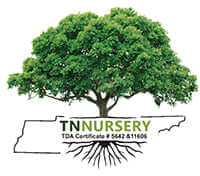The Art of Companion Planting with Perennials
Share
A Symphony of Beauty and Functionality
Companion planting is an ancient gardening technique involving growing different plants together to benefit both plants mutually. Gardeners have cherished this practice for centuries, as it not only enhances the aesthetic appeal of gardens but also improves plant health, deters pests, and maximizes space. Regarding companion planting with perennials, the possibilities are endless, and the results are often breathtaking.
In this exploration of the art of companion planting, we will delve into the harmonious pairings of perennials such as daylilies and Shasta daisies, tulips and Virginia bluebells, blanket flowers, and bee balm, Solomon's seal and ferns, and Jack in the pulpit and Jacob's ladder.
Daylilies and Shasta Daisies
Daylilies (Hemerocallis spp.) and Shasta daisies (Leucanthemum x superbum) are a classic pairing in perennial companionship. These two perennials combine to create a vibrant and eye-catching display in any garden. Daylilies, with their trumpet-shaped blossoms in various colors, contrast the bright white petals of Shasta daisies. Beyond their visual appeal, these plants work together in a functional sense. Daylilies' tall, slender stems provide a natural trellis for Shasta daisies, keeping them upright and preventing flopping. Additionally, Shasta daisies attract beneficial insects like ladybugs and lacewings, which help control garden pests, benefiting both themselves and the daylilies and other nearby plants.
Tulips and Virginia Bluebells
Tulips (Tulipa spp.) and Virginia bluebells (Mertensia virginica) offer a stunning springtime combination that captivates gardeners with contrasting colors and textures. The vibrant, cup-shaped tulip flowers in various hues starkly contrast with the delicate, drooping bells of Virginia bluebells in their serene shade of blue. This companion planting serves both form and function. Tulips emerge early in spring, providing a splash of color when the garden awakens from winter slumber. The taller tulips act as protectors, sheltering the Virginia bluebells from strong spring winds. Meanwhile, the bluebells act as a ground cover, keeping the soil moist and cool, which benefits the tulips during their growth.
Blanket Flowers and Bee Balm
Blanket flowers (Gaillardia spp.) and bee balm (Monarda spp.) are dynamic duos that enhance a garden's beauty and attract pollinators. The vibrant red and orange petals of blanket flowers complement the strikingly colored and fragrant blooms of bee balm, which can range from pink to scarlet. These two perennials are champions at attracting hummingbirds, bees, and butterflies. This makes them an excellent choice for gardeners interested in supporting pollinator populations. Additionally, bee balm's aromatic foliage can help deter some garden pests, making it an ideal neighbor for blanket flowers.
Solomon's Seal and Ferns
Shady corners of the garden come alive with the pairing of Solomon's seal (Polygonatum spp.) and various ferns. Solomon's seal boasts arching stems adorned with delicate, pendulous white flowers, while ferns contribute lush, feathery fronds that create an enchanting woodland atmosphere. In this companion planting, Solomon's seal provides vertical interest and a light, airy feel to the garden floor, allowing ferns to thrive underneath its canopy. The ferns, in turn, help maintain soil moisture and provide a cooling effect, which is essential in the shade where water retention can be a challenge. This partnership exemplifies the harmonious coexistence of plants in a shared habitat.
Jack in the Pulpit and Jacob's Ladder
The combination of Jack in the pulpit (Arisaema spp.) and Jacob's ladder (Polemonium spp.) adds a touch of mystery and whimsy to any garden. Jack in the pulpit, with its distinctive hooded spathe, beckons curious observers, while Jacob's ladder showcases intricate fern-like foliage and dainty, sky-blue flowers. This duo thrives in partial to full shade conditions and creates a visually captivating scene. Jack in the pulpit's intriguing structure provides shade and shelter for Jacob's ladder, which prefers a cooler, shadier environment. These plants' contrasting textures and unique characteristics make them a delightful addition to woodland gardens.
Cardinal Flowers and Blue Lobelia
Cardinal flowers (Lobelia cardinalis) and blue lobelia (Lobelia siphilitica) bring vivid color and wildlife to your garden. Cardinal flowers boast striking, scarlet-red blossoms that are irresistible to hummingbirds, while blue lobelia features delicate blue spikes of flowers that add a soothing contrast. This pairing creates a visual feast and attracts various pollinators and beneficial insects. Hummingbirds, in particular, are frequent visitors to cardinal flowers, which serve as a vital nectar source for these charismatic pollinators. Meanwhile, blue lobelia's vivid blue hues provide a stunning backdrop and additional nectar for other pollinators like bees and butterflies. This dynamic duo exemplifies the principles of companion planting by promoting biodiversity and ecological balance.
Milkweed and Butterfly Weed
The partnership between milkweed (Asclepias spp.) and butterfly weed (Asclepias tuberosa) is a prime example of a mutually beneficial relationship in the garden. Both plants are milkweed family members and share a deep-rooted connection with monarch butterflies. Milkweed serves as the primary host plant for monarch caterpillars, providing essential sustenance for their development. On the other hand, Butterfly weed offers vibrant orange blooms that attract adult monarch butterflies and other pollinators with their nectar-rich flowers. This combination contributes to the monarch butterfly's life cycle and supports a diverse range of pollinators, making it an excellent choice for gardeners who aim to support wildlife conservation. In addition to their ecological significance, milkweed and butterfly weed are drought-tolerant and low-maintenance perennials, making them a sustainable choice for gardens.
The art of companion planting with perennials is a symphony of beauty and functionality. By carefully selecting and pairing plants that complement each other in terms of aesthetics and benefits, gardeners can create harmonious landscapes that are visually appealing and ecologically sound. From the radiant combination of daylilies and Shasta daisies to the enchanting pairing of Solomon's seal and ferns, each of these companionships demonstrates the magic that can be achieved when plants collaborate in the garden. Whether your goal is to attract pollinators, enhance aesthetics, or create a balanced ecosystem, companion planting with perennials is a timeless technique that continues to enrich gardens worldwide.
